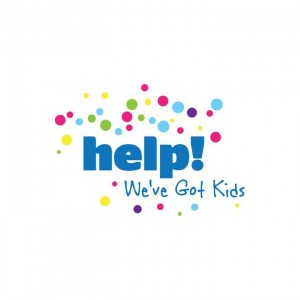A new way to transform customers into fans
 Today, consumers can know as much about your products as your sales staff before they step foot inside your store. Business survival depends on creative and inexpensive initiatives that allow you to leapfrog past the competition and grab the spotlight.
Today, consumers can know as much about your products as your sales staff before they step foot inside your store. Business survival depends on creative and inexpensive initiatives that allow you to leapfrog past the competition and grab the spotlight.
Do you know how to break through the clutter and capture your customers’ attention? Fortunately, a virtually limitless supply of new technologies, tools and networks are available. If you can’t be in High Point to learn how to “demystify” some of the more exciting new technologies like location-based marketing and social media marketing, get ready to learn. Right here. Right now. No reservation needed.
The new face of PR
 Coca Cola tapped into the power of social media in 2009 when it sought out “Happiness Ambassadors” in more than 200 countries. Charmin challenged Twitter influencers to join their potty party and compete to become one of five bathroom ambassadors in Times Square. Although not everyone won the big prizes, lots of entrants were rewarded with coupons and branded promotional products. Brand awareness spread like wildfire.
Coca Cola tapped into the power of social media in 2009 when it sought out “Happiness Ambassadors” in more than 200 countries. Charmin challenged Twitter influencers to join their potty party and compete to become one of five bathroom ambassadors in Times Square. Although not everyone won the big prizes, lots of entrants were rewarded with coupons and branded promotional products. Brand awareness spread like wildfire.
From diet pills to botox, we’re obsessed with the quick fix. The new face of PR – Facebook, Twitter, YouTube, etc. – can sound like the same kind of promise. With no added investment, your company can be the next Beiber of YouTube, right? Not quite.
Social media speeds up the effects of word of mouth, but it doesn’t replace the hard work that goes into making those conversations happen. And it’s only the tip of the relationship building that takes place on a daily basis. Social media isn’t free, but it’s the most effective and quickest way to reach potential customers – and turn them into fans.
Grow a tribe of evangelists
Think of social media as a personal shopper for your target audience. Swiss Chalet dedicates an entire TV channel to their rotisserie chicken with daily coupon codes redeemable on Facebook. By directing customers from TV to Facebook and back to the restaurant, they fuel conversations about their brand while getting taste buds salivating.
As a social media strategist, it’s my job to increase a company’s likeability online. Natura World Inc, a Cambridge mattress manufacturer, had a website but not much more when I joined their team in 2009. Within a year, more than 4,000 people on Facebook and 7,000 on Twitter followed the company. We did it by targeting the busiest group online today – moms.
We talked to influential bloggers, sending them signature products to experience with their families: a pillow, blanket or mattress topper. Because Natura’s product line is so unique, communicating differentiators became our biggest hurdle and our sweetest reward. Once our bloggers understood the message, they shared it with their readers by holding contests.
Readers of the blogs were asked to visit the Natura site and report back to the blogger which product she liked best. One of our bloggers received more than 700 comments. The rise in traffic was impressive but the brand engagement that carried over to Natura’s Twitter and Facebook steams spread the message further than any PR engine could ever accomplish alone.
Natura also held monthly themed contests. Fans on Facebook and Twitter were invited to share pictures and stories for a chance to win trademarked products – for use in rooms other than the bedroom. For example, a uniquely scented air freshener is perfect for the bedroom, but winners were encouraged to use it in other rooms and take it to the office.
Of course, after-contest engagement helped spread the message further. Asking fans to post pictures of the products in use helped potential customers see themselves using the products. Cross-promotional campaigns work best when in-store signage and knowledgeable sales staff share the information.
Make the message sticky
 The average Canadian is exposed to more than 400 marketing messages each day and getting your message to be “sticky” in that onslaught is almost impossible. Almost. Reaching past the clutter and providing relevant information that improves people’s lives deepens the relationship and keeps your brand top of mind.
The average Canadian is exposed to more than 400 marketing messages each day and getting your message to be “sticky” in that onslaught is almost impossible. Almost. Reaching past the clutter and providing relevant information that improves people’s lives deepens the relationship and keeps your brand top of mind.
Tracie Wagman, Publisher of “Help! … We’ve Got Kids” says parents of young children are unbelievably distracted. She uses her social media platforms (Facebook and Twitter) to ignite conversations between parents and brands. Questions like “At what age do you leave your kids at home without a babysitter?” sparks information sharing – and sometimes feisty debates.
She also uses her publication to give away products and tickets to shows. Many of her clients don’t have social media platforms themselves and hers becomes their spot to shine. “So many parents are on social media and they’re using it to talk to each other and brands.”
Wagman’s publication is considered the Yellow Pages for parents online. The company has been producing a print directory for almost 20 years and their website sees 90,000 unique visitors a month.
Define and measure success
When you buy an ad at the local hockey arena, how do you measure success? What about printed flyers delivered in the paper? While social media can feel more measurable, it’s a long-term play and measuring it can be tricky. We’re building relationships, remember?
 Dwayne Welch, vice president for Hickory Springs, a foam and springs manufacturer in North Carolina, says jumping into social media is a monumental task for his 66 year old, conservative company. In 2010, Hickory Springs launched their Earth Care Inside label and along with it, a social media campaign that asked people if they were eco-chic or eco-oblivious. They asked people to load a video on their Facebook, Twitter or YouTube channels. The winner received $1,000 worth of furniture from one of their partners (the furniture sported the Earth Care Inside logo).
Dwayne Welch, vice president for Hickory Springs, a foam and springs manufacturer in North Carolina, says jumping into social media is a monumental task for his 66 year old, conservative company. In 2010, Hickory Springs launched their Earth Care Inside label and along with it, a social media campaign that asked people if they were eco-chic or eco-oblivious. They asked people to load a video on their Facebook, Twitter or YouTube channels. The winner received $1,000 worth of furniture from one of their partners (the furniture sported the Earth Care Inside logo).
“We wanted to be a participant in the conversations online, not merely an observer, because we have a story to tell our retailers, which they can tell to the end consumer.”
The challenge for businesses like Hickory Springs is to continue the conversations on Facebook between contests. Welch is the first to admit that they’re still in the learning stages and that with social media, some of that learning takes place in a very public forum. “We feel it’s better to be in front of this movement than jump on the backend and try to catch up,” said Welch. “Our long-term, end goal is for consumers to ask for products that carry our foam inside.”
Facebook tips
 When people “like” or “follow” brands on social media, they’re giving that brand permission to join an inner circle – not bombard them with marketing messages. It’s called permission marketing because you’re no longer interrupting a TV show or a song. You’re an invited guest into the conversation. Understanding how to do it and measure it are keys to success.
When people “like” or “follow” brands on social media, they’re giving that brand permission to join an inner circle – not bombard them with marketing messages. It’s called permission marketing because you’re no longer interrupting a TV show or a song. You’re an invited guest into the conversation. Understanding how to do it and measure it are keys to success.
• Develop a brand voice – funny, hip, philosophical, informational. Stay true to it.
• Diversify your social media conversations. Talk about more than just your products so it’s not all marketing.
• Make your content sharable. Put a like button on product and information pages on your site.
• Use analytics on Facebook to tweak when and what you post.
• Use Google Analytics to get a better picture of traffic patterns from your social media platforms.
• Invest in social media across your entire organization – each department can play a role.
Simple Social Media Strategy
Launching a social media contest or reward campaign that involves logoed merchandise involves listening, planning, strategy – and smart execution. These tips will help you incentivize your influencers to share your products with their communities.
1. Use a tangible thank you. Choose easily sharable promotional products you’re going to send to winners or influencers. Wagman (from Help! We’ve Got Kids) says consumable products like tickets to shows or restaurant gift cards involve the whole family and can lead to picture sharing on social media.
2. Build the buzz. Volvo’s March Madness campaign didn’t make fans wait for the grand prize to be announced. They rewarded loyal contest participants throughout the contest with secret promo codes, discounts and branded products.
3. Carry the message further. Engaging in conversations is key to a successful campaign. When someone redeems a gift card and tweets about it, ask about the service, the food, the ambiance – a picture of dessert.
4. Manage negativity. When there’s a problem with service or if a promo product breaks, choreograph the conversation and get a phone number. Then fix the problem. Quickly.
Are you struggling with how to engage with pizazz on social media? I’d love to hear about your frustrations and fantasies. Share your stories here and let’s learn from each other!
Got social media questions? Follow me on Twitter, friend me on Facebook or connect with me on LinkedIn – I’m always on.


Latest comments